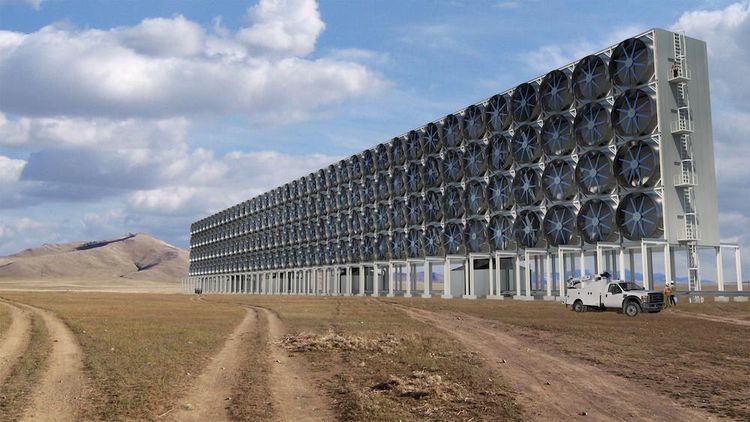Exa, Peta, Tons and Joules?

You may have read that we emitted 50 Gigatons of Greenhouse Gases in 2020. Or you may have read that the world used around 500 exajoules of energy in the same time, which is the same as 23 billion kWh.
Numbers related to Climate Change are already so huge that they’re hard to grasp, using different units per article just adds up to the confusion. How are we even going to solve the climate problem if we can’t understand what units to use?
Here’s a guide with some useful tips and examples so that you better understand what the numbers mean.
Multipliers - Billion tons or Gigatons?
We start with the basics of multipliers and some examples from the computer industry:
- kilo- is 1.000 times a basic unit, like kilo-byte. Text files in your computer are usually a dozen or hundreds of kilobytes.
- mega- is 1.000.000 times (or “10^6”), like mega-byte - that’s also the same as “million”. Think image files.
- giga- is 10^9, like giga-byte. Think video files. That’s the same as “billion”.
- tera- is 10^12. This is where I start to get confused. If I think “big hard drives”, that helps me understand that this comes after giga.
- peta- is 10^15. This I always have to memorize :/.
- exa- is 10^18. I cheat here, because in Greek “exa” is the prefix form of the number 6 (“exi”), so I always remember that this is sixth in list.
You can apply these prefixes in every other unit, like Watthour, Joule, Tons - they don’t change at all, so once you’ve memorized the list above you’re good to go.
We use tonnes, or tons, or tns in order to weigh Carbon, Carbon Dioxide and other Greenhouse Gases (GHG).
- We emitted 49,36 Gigatons (Gtns) in 2016 (and we’re still at around that point)
- We have emitted 375 Gtns of CO2 since the industrial revolution
- We can only emit about 230-440GtCO2 if we want to keep the temperature to below 1,5C
- Climework’s plant captures 4.000 tons CO2, only
- The average carbon footprint for a person in the United States is 16tons
Concentration - What is ppm?
You may have seen the unit ppm when people refer to Carbon concentration in the atmosphere. This means “parts per million” and is the equivalent of 1 mg of substance per liter.
It can be converted to a percentage by converting 100 by a million, so:
- 1 ppm is 0,0001%
- 100 ppm is 0,01%
- 400 ppm is 0,04%
- The current concentration of CO2 in Earth’s atmosphere is 412ppm, or 0,0412%
Energy - How to convert Watts to Joules
The most common unit for measuring energy is Watthour the kilo- version of which is probably what you have seen in your electricity bills.
Many times, though, you’ll see the Joule unit mentioned but don’t worry as they are related.
1 kWh is equivalent to the energy of 1.000 joules used for 3.600 seconds (remember, 3.600 seconds = 1 hour), so 1 kWh equals 3,6 million Joules. Or, reversely, 1 Joule equals 0,000277 kWh.
- The world’s electricity consumption in 2018 was 23,398 Terawatthour, or about 23 Exawatthour (EWh)
- We generated around 7.444 TWh of renewable energy in 2020
- A Tesla uses 34 kWh per 100 miles
Carbon forms - What is Carbon Dioxide Equivalent?
We know that Greenhouse Gases have a Global Warming Potential (GWP) by trapping heat in Earth’s atmosphere, but they are not all equal.
Methane has a higher GWP than Carbon Dioxide (34 times, specifically) but we don’t freak out about it so much, because it stays in the atmosphere for 12 years compared to the 300 - 1.000 of CO2.
Here are some convertions for the most common Greenhouse Gases:
- Methane (emitted by animal farms and power factories) has 28 times the GWP of CO2’s
- Nitrous Oxide (emitted by
Volkswagencars) has 265 times the GWP of CO2’s
We use the term “Carbon Dioxide equivalent” (CO2e) when we group all of the Greenhouse Gases together, which is why you might see conflicting numbers about our emissions in the same sentence:
- We emit around 36GtCO2 per year
- but we also emit around 50GtCO2e per year
Lastly, here’s another confusing thing for you: you might sometimes see numbers around a certain Carbon capacity, compared to a CO2 capacity. As you know from basic chemistry, these are not the same:
- 3,67 tons of CO2 contain 1 ton of Carbon
You can use this 1:3,67 to make convertions from and to these two.
EU notation, commas and dots
If you are reading this from the US and are scratching your head around some of the numbers I mention, I should probably explain that I’m using the European number formatting:
- Commas for decimals: 10,5 is “ten point 5” (yeah, I now understand how it sounds)
- Dots for thousands, millions etc: 1.000 is “one thousand”
Thank you for reading all the way through and I hope you find this article helpful. I aim to make Carbon Capture easier to understand - if you’d like to receive them to your email, please subscribe.




